Understanding how they’re built and being able to use the differences between major and minor pentatonic scales can help with improvising, writing melodies, and understanding the fretboard. It would probably be useful to know the differences between them.
The difference between a major and minor pentatonic scale is that the major pentatonic is a 5-note scale based on the major scale. It has 3 major intervals. On the other hand, the minor pentatonic scale, which also has only 5 notes, is based on the natural minor scale and has 2 minor intervals.
What is the Difference Between A Major and Minor Pentatonic Scale?
Simply put, major and minor pentatonic are based on the major scale and the natural minor scale – which is just the major scale but starting on the 6th degree. We can also conceptualize scales as intervals and these intervals determine what a certain scale sounds like, therefore, the scale’s function for musicians.
As I said a moment ago, the fundamental difference between the major and minor pentatonic scales is that the major pentatonic is a 5-note scale based on the diatonic major scale. The minor pentatonic scale, on the other hand, is a 5-note scale based on the natural minor scale. I think this chart down here though will help you a lot.
| Features of Pentatonic Major Scale | Features of Pentatonic Minor Scale |
|---|---|
| Based on the major scale | Based on the minor scale |
| Features the 1 – 2 – 3 – 5 – 6 of the major scale | Features the 1 – 3 – 4 – 5 – 7 from the minor scale |
| Uses the chords I-ii-iii-V-vi (Ex. Cmaj, Dm, Em, Gmaj, Am) | Uses the chords i-III-iv-v-VII (Ex. Am, Cmaj, Dm, Em, Gmaj) |
| Has the intervals: Major 2nd, Major 3rd, Perfect 5th, Major 6th | Has the intervals: Minor 3rd, Perfect 4th, Perfect 5th, minor 7th |
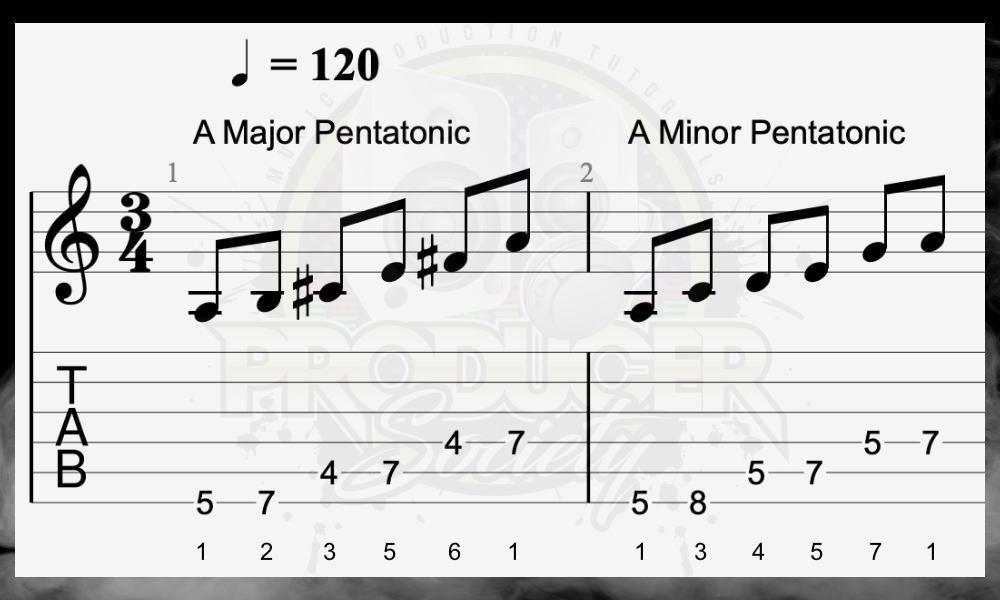
You should have a good idea of the differences between these two scales now, however, I think it’s worth our time a bit to actually dive into each one in detail. Let’s do that now in the sections below or if you need a refresher because this feels like too much, head to my guide to music theory for more general theory knowledge.
What Is The Major Pentatonic Scale?
First, understand that “penta” is Greek for “5.” So if you hear of a scale being pentatonic, it just means there are 5 notes in it. There can be more than just major and minor pentatonic scales too. For this article though, we’re just talking about 2 of these scales.
The major pentatonic scale is really just a 5-note version of the major scale including the 1st, 2nd, 3rd, 5th, 6th. But what makes it sound like it does is the collection of intervals, which omit a few and include a few others to give it its sound. Here’s what the regular C Major Scale looks like. I’ve also included the chords later in the article.
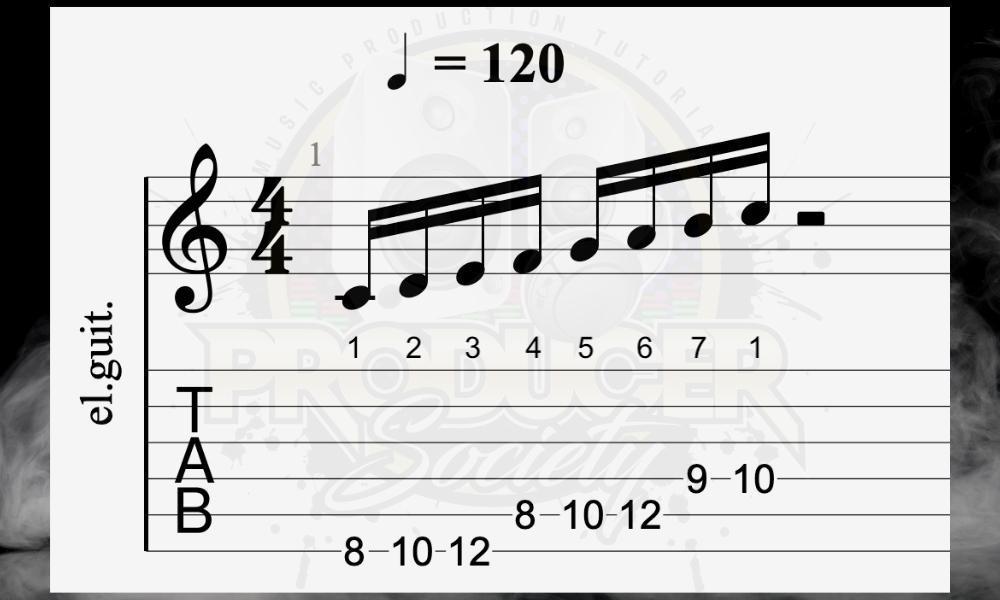
A major pentatonic scale uses 5 notes within the major scale. Those notes are the 1st, 2nd, 3rd, 5th, and 6th notes of the major scale.
Or if you like to think in scale degrees, 1 – 2 – 3 – 5 – 6.
The 4th and 7th are removed.
For example, a C major pentatonic scale would be:
C – D – E – G – A
A G major pentatonic scale would be:
G – A – B – D – E
I think you get the picture.
According to Guitar Goblin’s take on the major pentatonic, Lynyrd Skynrd’s song “Sweet Home Alabama” (here it is on YouTube) uses the major pentatonic in the bridge. Much of that solo is the major pentatonic if you would like an audio example.
The major pentatonic is a popular scale used in music because of its “happier” feel and because it sounds great on melodies and solos. Many guitarists like using the major pentatonic in addition to the minor pentatonic.
Rather than using entire scales to improvise, guitarists can use the pentatonic as a tonal center for soloing. Let’s talk more about the omitted intervals because the omission of the major 7th plays a pretty big role in why it’s so happy sounding.
By the way, I recommend Mark Sarnecki’s books (and the Answer Book) if you want to learn this stuff a bit better.
![Mark Sarnecki's Complete Elementary Rudiments - Why Do Some Pianos Start With A C and Not an A [ANSWERED]](https://producersociety.com/wp-content/uploads/2022/03/Mark-Sarneckis-Complete-Elementary-Rudiments-Why-Do-Some-Pianos-Start-With-A-C-and-Not-an-A-ANSWERED-1.jpg)
How Are the Major Pentatonic and the Major Scale Different?
1) The Major Scale Has 7 Intervals – The Major Pentatonic Scale Only Has 5
The regular major scale is made up of whole steps and half steps in a particular order. The whole steps are major seconds and the half steps are minor second intervals.
The intervals however are all major. In case you don’t know, An interval is a distance between two notes.
For example, the C major scale: C – D – E – F – G – A – B – C
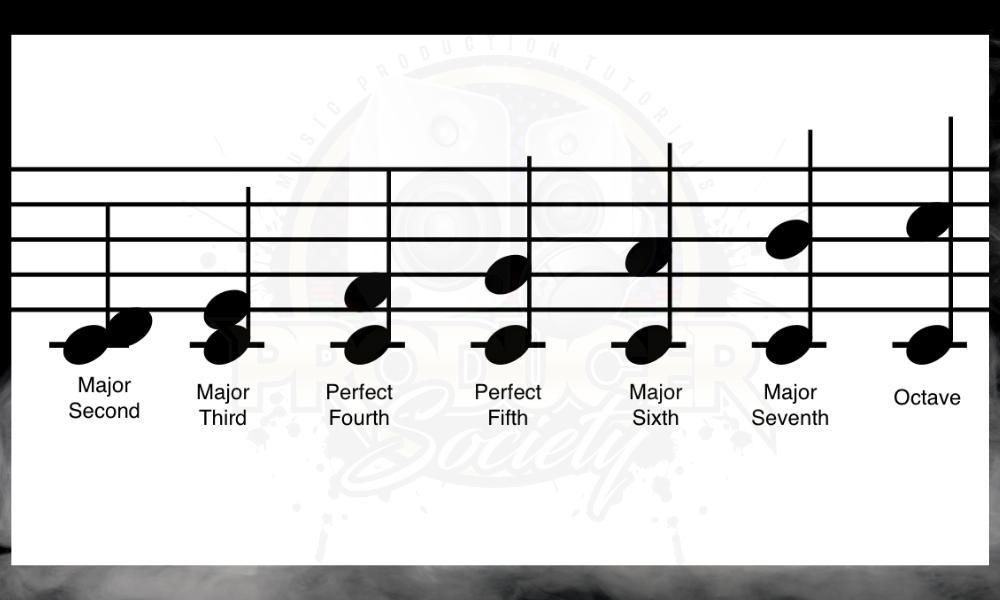
2) The Major Pentatonic Scale Omits The Perfect 4th and Major 7th Intervals
For the major pentatonic scale, we have 5 notes with all major intervals.
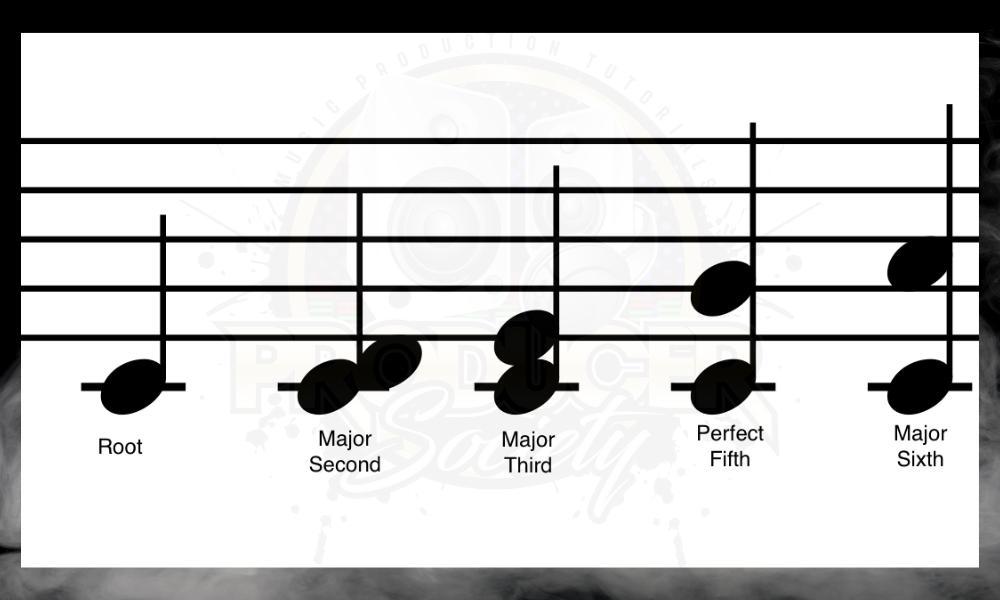
If you read my guide on the double harmonic major scale, you know that major 7th intervals are sort of happy – but also quite dissonant. The perfect 4th is also very slightly dissonant, although, not as much. It certainly isn’t major or minor.
By removing these intervals, we’re left with only the happiest sounds of the major scale. And this is why the major pentatonic is the way it is.
3) The Major Scale Has 7 Chords and the Major Pentatonic Scale Has Only 5
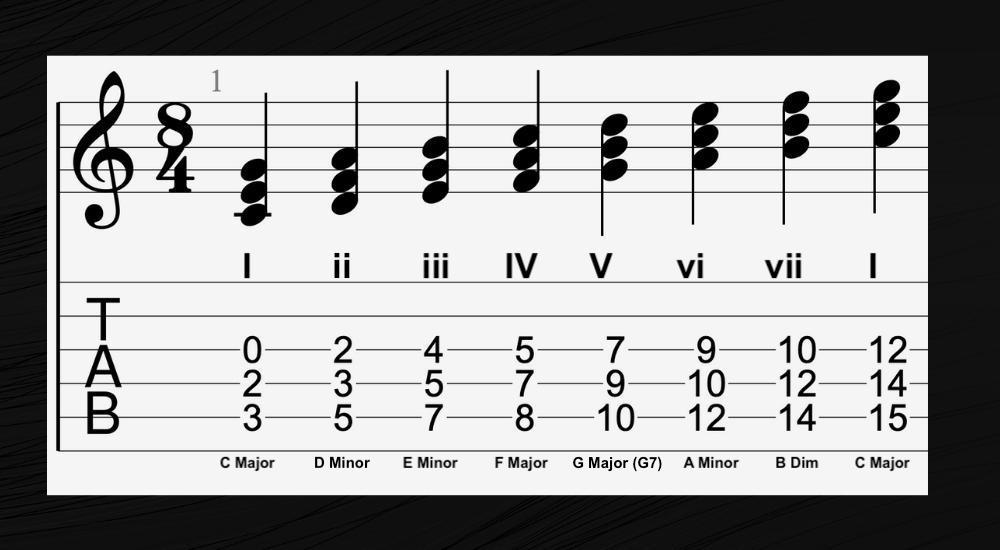
As I’ve said already, the major pentatonic scale is derived from the major scale. Understanding where a major pentatonic scale comes from is a good start to understanding what a major scale is. A major scale has 7 notes or 8 notes if you include the same note you started with but at a higher pitch. That is called an octave.
For example, a C major scale would be (with the octave):
C – D – E – F – G – A – B – C
A G major scale would be (with the octave):
G – A – B – C – D – E – F# – G
If you were to build triads from these notes, you would get the chords that are in the image above: C Major, D Minor, E Minor, F Major, G Major (G7), A Minor, B Dim, C Major. By removing the 4th and 7th chords to make it pentatonic, we get only the following chords: C Major, D Minor, E Minor, F Major, A Minor. Let’s talk more about this down below.

The Chords of the Major Scale
The chords of the major scale are determined by the character of every major scale note. The major chords will be notated as capital roman numerals. The minor will be notated as lowercase roman numerals. Chords are built upon intervals, but just because the major scale has major intervals in it does not mean every chord is major.
I: Root/tonic – this is known as the 1, or the tonic chord. It is always Major regardless of the Key.
ii: This is known as the 2 chord. It is minor.
iii: This is known as the 3 chord. It is minor.
IV: This is known as the 4 chord. It is Major.
V: This is known as your 5 chord. It is Major.
vi: This is known as your 6 chord. It is minor.
vii: This is known as your 7 chord. It is diminished.
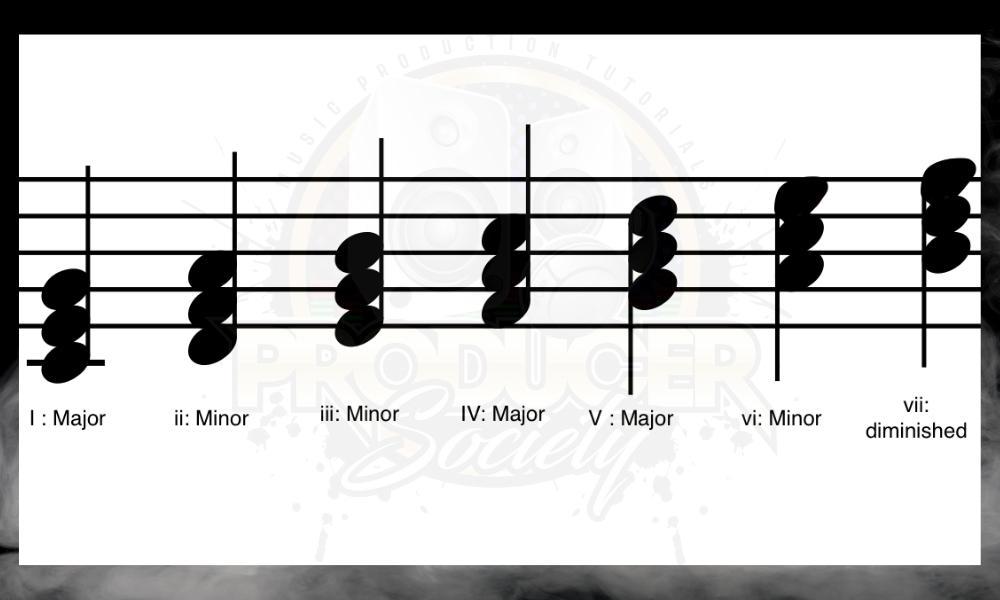
The Chords of the Major Pentatonic Scale
The chords of the major pentatonic reflect the chords of the major scale. In the example below, the chords of C Major Pentatonic are C Major, D Minor, E Minor, G Major, and A Minor.

When to Use the Major Pentatonic Scale and Why
The best place to use the major pentatonic scale is over any song in a major key. Use the major pentatonic to write melodies, harmony lines, and improvising parts, particularly when there is no IV chord or vii chord in the progression, which happens quite a lot.
In blues, people jam over I-V-I quite a lot, although, they’ll usually use the V dominant 7th chord, which has the minor 7th on top (the 7th note of the scale on top of the major chord). Musicians can use the major pentatonic as a “happy” sound for their improvising or songwriting.
Anyway, I think you get the idea now. The next scale we’re going to talk about is used even more than the major pentatonic scale, and it’s the minor pentatonic scale. It’s the one we all know and love. That much is for sure.

What Is the Minor Pentatonic Scale?
The minor pentatonic scale is just a 5-note version of the natural minor scale, which is the regular major scale except it starts on the 6th note. Those notes are the 1st, 3rd, 4th, 5th, and 7th notes of the minor scale. Or if you like to think of it in scale degrees, 1 – 3 – 4 – 5 – 7.
The 2 and 6 are removed.
For example, an A minor pentatonic scale would be:
A – C – D – E – G
An E minor pentatonic scale would be:
E – G – A – B – D
In essence, you just take the natural minor scale and remove the 2nd and the 6th. A great song to listen to if you want to immediately hear what the minor pentatonic sounds like is AC/DC’s “Beating Around the Bush”. It has an opening riff completely derived from the Eb minor pentatonic.
The minor pentatonic is a guitarist’s bread and butter. So many solos, main riffs, and melodies have been derived from this scale. Its passionate, bluesy, and intense sonic character makes it so versatile and easy to use.
How Are The Minor and Minor Pentatonic Scales Different?
1) The Natural Minor Has 7 Intervals – the Minor Pentatonic Has 5
The natural minor scale is made up of whole steps and half steps in a particular order. Keep in mind that there are two other minor scales, harmonic and melodic which are different than natural.
We will be discussing natural minor since the minor pentatonic is derived from that particular scale. See the chart below for a look at the intervals of an A minor scale:

2) The Minor Pentatonic Scale Has The Major 2nd and Minor 6th Omitted
For the minor pentatonic scale, we have 5 notes with major and minor intervals.
This is the key of A minor:

By eliminating the major 2nd from the natural minor scale, we’re left with a minor interval, so we’re removing a mixture of competing intervals. Then, we get rid of the minor 6th which is fairly dissonant.
By removing them, we’re left with the natural minor pentatonic, which has easier-sounding minor intervals that aren’t quite as dissonant. I like the way I put it. We’re left with intervals that are minor, but they’re easier to listen to.
3) The Natural Minor Scale Has Different Chords Than The Minor Pentatonic Scales
The chords of the minor scale are determined by the character of every minor scale. The major chords will be notated as capital roman numerals. The minor will be notated as lowercase roman numerals. Chords are built upon intervals, but just because the minor scale has minor intervals in it, does not mean every chord is minor.
i: Root/tonic: This is known as the 1, or tonic, chord. It is minor.
iiº: This is known as the 2 chord. It is diminished.
III+: This is known as the 3 chord. It is Major (and often augmented)
iv: This is known as the 4 chord. It is minor.
v: This is known as your 5 chord. It is minor.
VI: This is known as your 6 chord. It is Major.
VII: This is known as your 7 chord. It is Major.
The Chords of the Natural Minor Scale

The Chords of the Minor Pentatonic Scale
The chords of the minor pentatonic reflect the chords of the minor scale. Remember, the minor pentatonic is like the minor scale but without the 2nd and 6th scale degrees. In the example below, the chords of A minor Pentatonic are:

When to Use the Minor Pentatonic Scale and Why?
The best place to use the minor pentatonic scale is over any song in a minor key or during a minor chord progression. Use the minor pentatonic to write melodies, harmony lines, and improvising parts. Musicians can use the minor pentatonic as a “bluesy” or “rock and roll” type of sound for their improvising or songwriting.
Try it on your next 12-bar blues jam session. The minor pentatonic is a really useful tool in a guitarist’s tool belt. It can basically be used in any song for purposes like improvisation and harmonizing.
If you find yourself stuck on what to play for improv, you can always trust the minor pentatonic to be a great starting place. That said, I would say it is the scale that people have used for so long, that it’s a great way to sound very basic and like everyone else.
What’s the Relationship Between the Major and Minor Pentatonic Scale?
In the world of guitar playing, the major and minor pentatonic can be used interchangeably if used properly. How to use them together will be discussed later.
The relationship between the two scales consists of the relative major and minor scales. If you have noticed, the examples given in this article have been C Major and A minor, which are relative keys to each other. The G major and E minor examples were also given, but ignore them for now.

C major and A minor have the same notes in their scales. So they can be used interchangeably when writing or improvising. Therefore, the major and minor pentatonic scales can be used with the relative major and minor of certain keys.
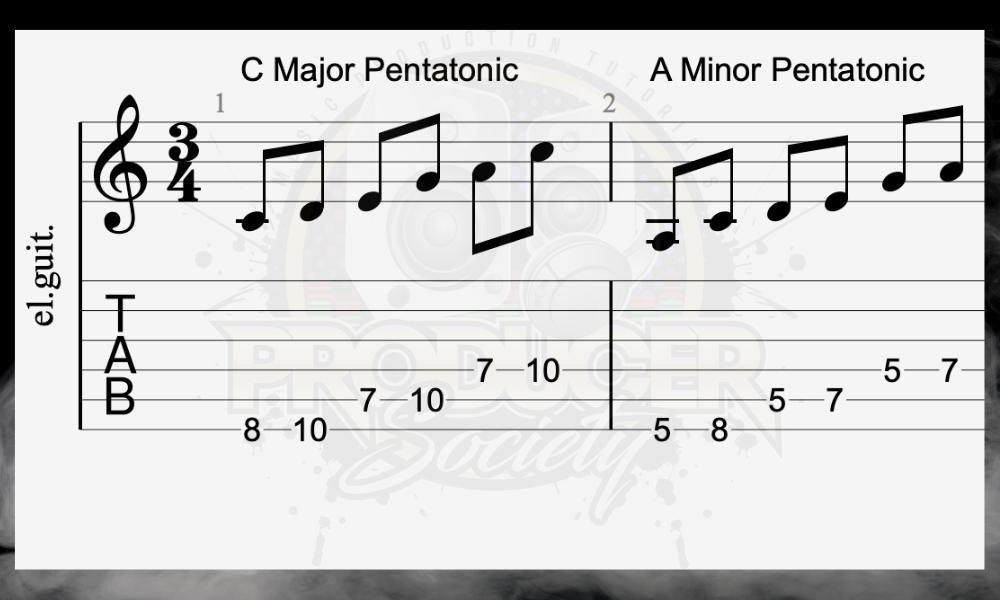
I’ll put it another way for you: C Major and A Minor share the exact same notes, it’s just that they’re organized in a different way. A Minor is just the notes of C Major starting on A. These are called relative major and minors, and it’s one of the many useful purposes of the Circle of 5ths which you can see down here:
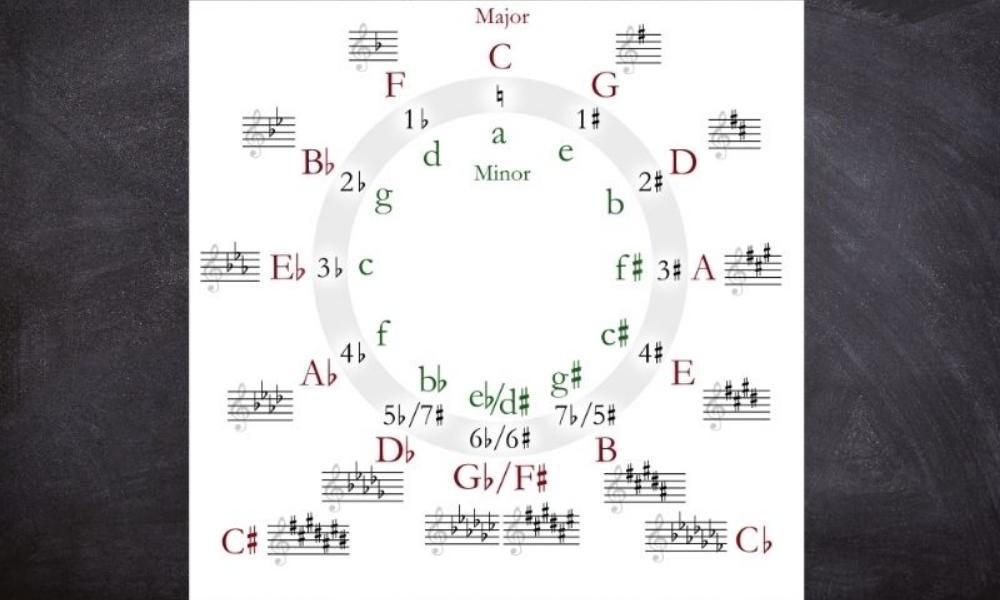
How to Transition Between Major and Minor Pentatonic Scales
A great start for using the major and minor pentatonic is to establish what key you are improvising or playing in. For example, C major is the key. So the proper scale to use would be C major pentatonic in that song, but you could also use A Minor.
The relative minor of C major is A minor. So the proper scale to use would be A minor pentatonic in that song. On the fretboard of the guitar, these scales are closely related because they share the same notes.

When I improvise, if I am in a major key, I usually start with the major pentatonic of that key. Then, to shake things up a bit, I throw in the notes of the minor pentatonic for a nice soulful sound. Sliding in between each scale can give some really amazing sounds in a song.
Be careful on which chords you play each of these scales over. Most of the time, certain scale shapes in guitar playing are almost accident-proof, but still, feel it out. Make sure it sounds pleasing to you.


 Written By :
Written By : 